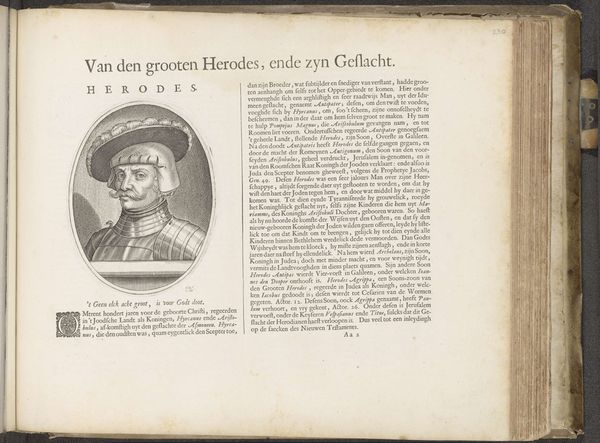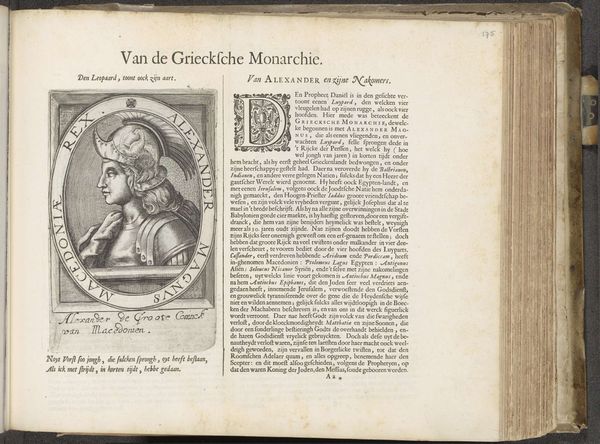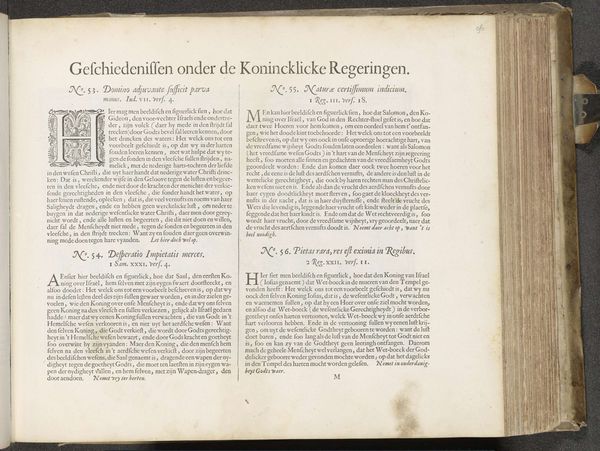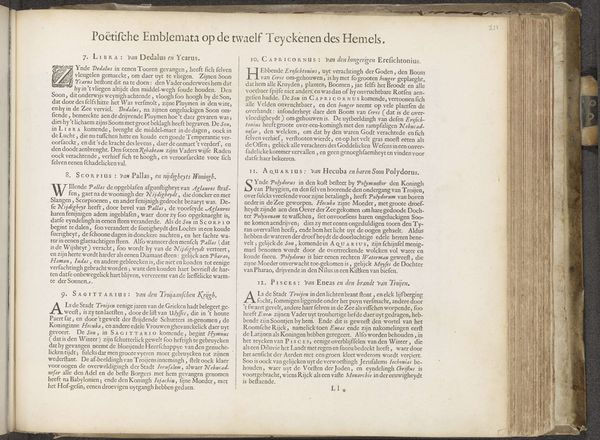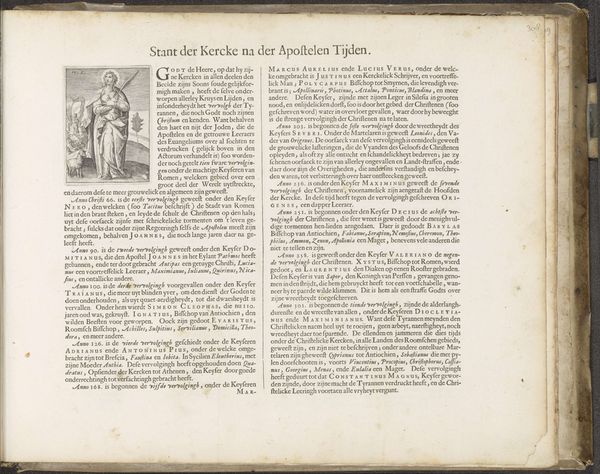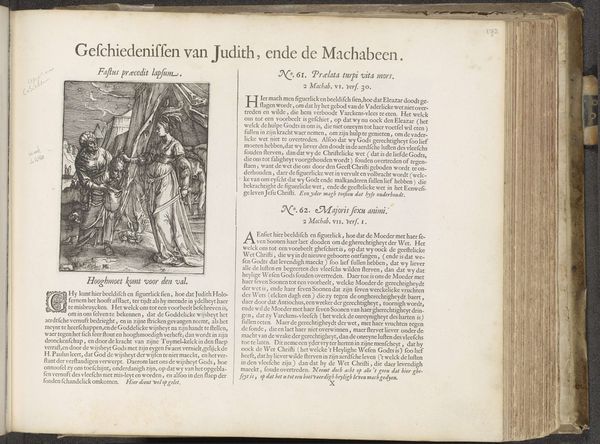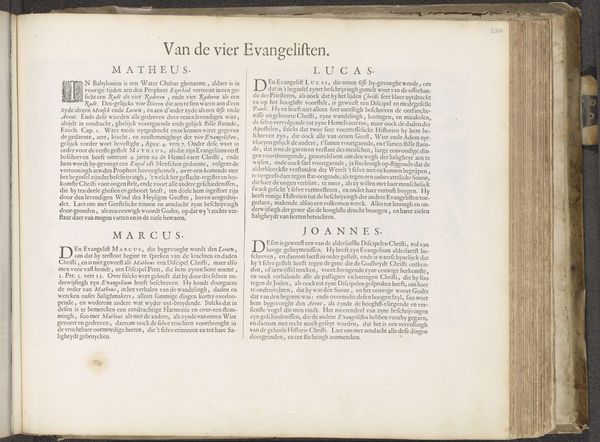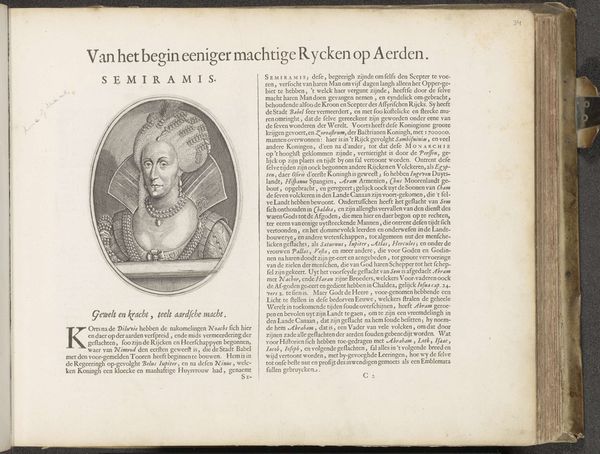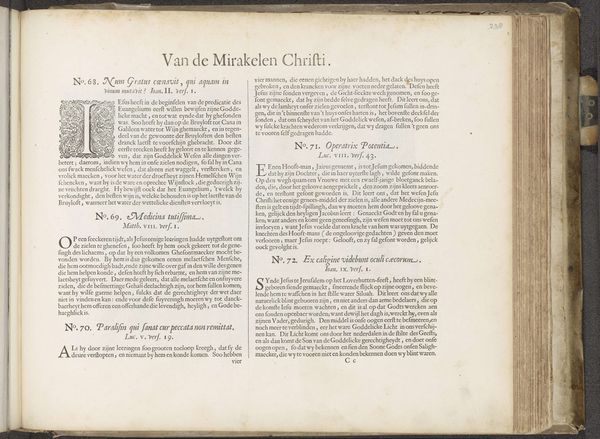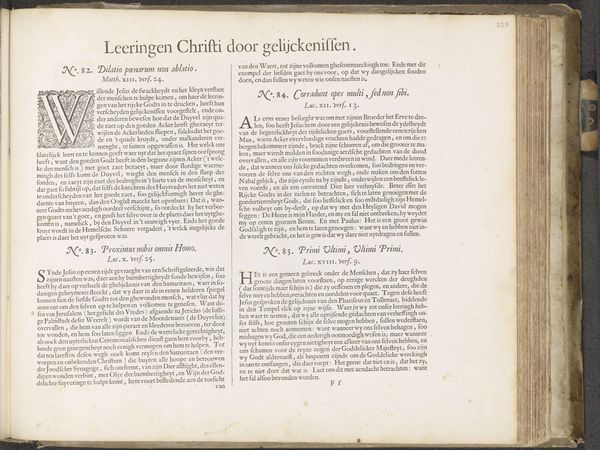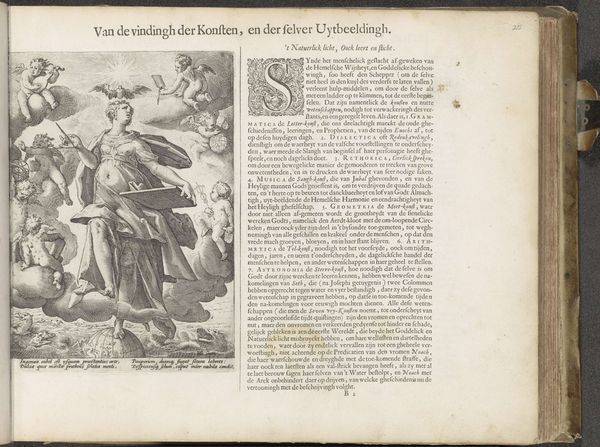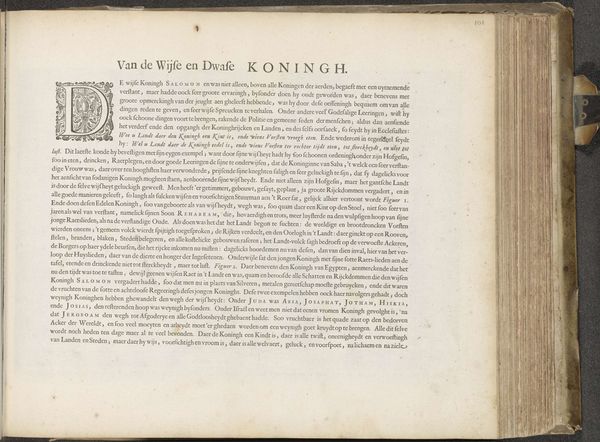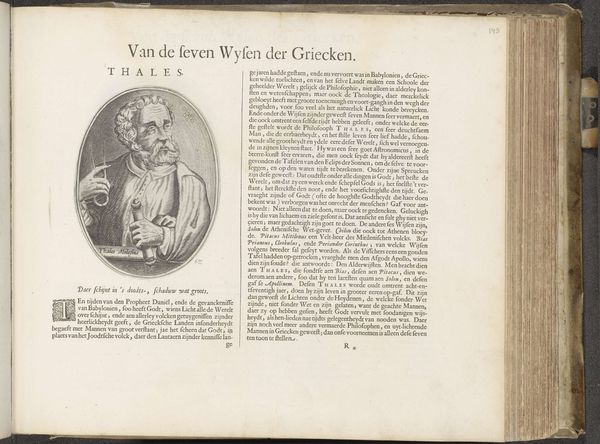
print, paper, ink, engraving
#
narrative-art
#
baroque
# print
#
paper
#
ink
#
engraving
Dimensions: height 122 mm, width 94 mm, height 294 mm, width 370 mm
Copyright: Rijks Museum: Open Domain
Editor: Here we have a 17th-century engraving titled "Boetvaardige man (koning David?)," which translates to "Repentant Man (King David?)" made between 1653 and 1654. It's attributed to an anonymous artist. I’m struck by how dark and intimate it feels, like a glimpse into a very private moment of sorrow or reflection. What symbols or themes jump out to you? Curator: What grabs me are the ways that printed images helped transmit and shape collective memory. The figure—potentially King David—is framed almost like a stage play. He's kneeling, bathed in a divine light, with hands clasped. This instantly signals repentance and humility, visually reinforcing a very specific moral narrative. The architecture seems simple, like the bare stage for something momentous to unfold. Editor: It definitely has that theatrical feel! I notice the heavy emphasis on light and shadow. The figure seems caught between darkness and divine intervention. Curator: Exactly. Baroque art uses light to emphasize dramatic moments. Ask yourself: where else do we find this struggle between light and darkness? Think of Caravaggio, or Rembrandt… It speaks to a deeply ingrained struggle with good and evil, sin and redemption. Consider how easily accessible these printed images made such ideas at the time. Do you see a wider context here? Editor: So, it’s about more than just one king's repentance; it’s about using visual symbols to convey larger theological ideas about regret and seeking forgiveness? Curator: Precisely. The print would have served as a readily reproducible image that carried profound meaning to a large audience. The scene serves as both narrative and a powerful reminder of one’s moral obligation. The anonymous maker knew how to make these stories deeply resonant. Editor: I’d never considered how powerful simple printmaking could be. Curator: These reproducible images built the religious context. You’re not just seeing an image, but generations’ interpretation of Biblical ideas being reproduced to make you feel something very precise. Editor: This has made me consider how impactful visual shorthand can be. This definitely reshaped my understanding of how prints were disseminated and culturally impactful during this era.
Comments
No comments
Be the first to comment and join the conversation on the ultimate creative platform.
